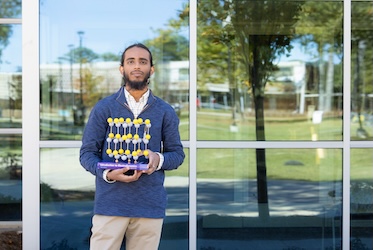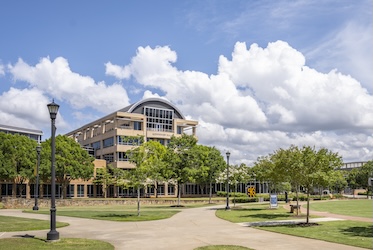

KENNESAW, Ga. | Mar 15, 2018
What started as a subdued religious homage to an Irish Catholic saint has evolved into an all-out, largely secular celebratory bash. The original celebrants might find as blarney or bang-on these modern-day trappings:
At its origins in Ireland, however, St. Patrick’s Day was not a raucous affair, says Bryan McGovern, a Kennesaw State associate professor of history and author of a series of books and articles about Irish-American history. In fact, he noted, it wasn’t even green. As a feast day in honor of the venerated Irish patron saint who used the shamrock to explain the Trinity of God, the celebration typically involved attending mass, a modest parade and a celebratory dinner of cabbage and bacon (not corned beef) at home. And celebrants were more likely to wear blue, the color then most associated with St. Patrick.
It wasn’t until after an Irish nationalist uprising in 1798, led primarily by Protestants, that the shamrock and its green color were adopted as nationalist symbols, McGovern explained. The nationalists, who called themselves United Irishmen, believed that associating these symbols with the feast of Saint Patrick gave the movement more popular appeal. They wore green as their uniforms.
The ensuing story of St. Patrick’s Day is closely correlated with the rise of Irish nationalism and the immigration of first Irish Protestants and later Catholics to North America, said McGovern, author of “John Mitchel: Irish Nationalist, Southern Secessionist,” and co-author of “The Fenians: Irish Rebellion in the North Atlantic World.”
McGovern cited a few additional developments that helped shape the widespread celebration of St. Patrick’s Day:
For all its history, the celebration St. Patrick’s Day today is best associated with the joy, merriment and good wishes that typically come with it:
For each petal on the shamrock
This brings a wish your way-
Good health, good luck, and happiness
For today and every day.

Kennesaw State assistant professor, lab open doors to hands-on innovation in chemistry

Research conducted by Kennesaw State student could lead to faster, more efficient electronics

Kennesaw State designated a Military Spouse Friendly School by Viqtory

Professional sales students rise to the occasion in TK Elevator Pitch Competition
A leader in innovative teaching and learning, Kennesaw State University offers undergraduate, graduate, and doctoral degrees to its more than 47,000 students. Kennesaw State is a member of the University System of Georgia with 11 academic colleges. The university’s vibrant campus culture, diverse population, strong global ties, and entrepreneurial spirit draw students from throughout the country and the world. Kennesaw State is a Carnegie-designated doctoral research institution (R2), placing it among an elite group of only 8 percent of U.S. colleges and universities with an R1 or R2 status. For more information, visit kennesaw.edu.